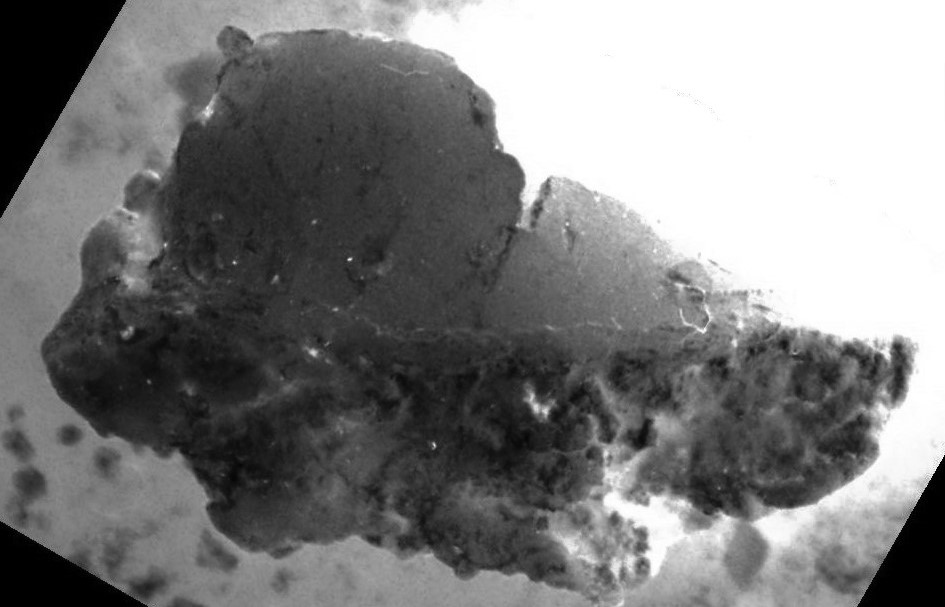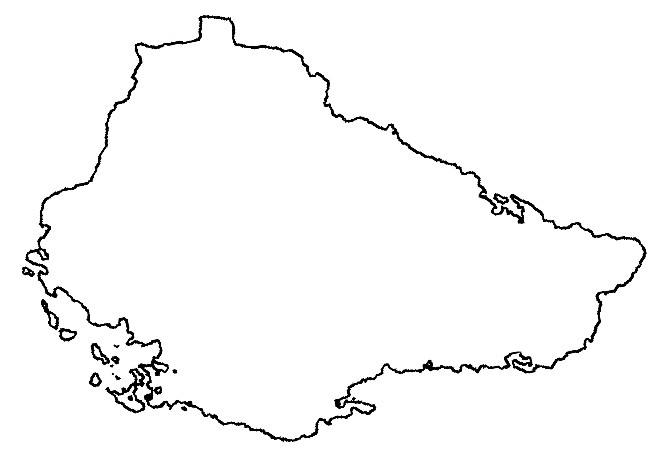
Savoldo's "Rest on the flight to Egypt"

The stone negative upside down

Outline of the white stone back side mirrored

Syria on the map
(source 'Microsoft Encarta')
Savoldo
John Bjarne Grover
The theory - on background of this theory - is that Giovanni Savoldo is a global function 12b artist, basically applying to book 12 "Lead lushions in a bowl" by the second chapter called "'Sistura'. M.Lywork (Blue clothespiece in snow)", pages 1004-1080. Only about 40 works are known of Savoldo and there are 82 poems in this chapter - could be some of the artworks take two poems. Even the adjacent poem?
The theory is that the global reference is in the form of four mirror symmetries for each poem, contributing to this maya web: The poem itself (from book 12b), the mirror-symmetric poem on the other side of the entire work, and the two mirror poems to these within each half (1-860 is the first half, 860-1729 is the second). I here list the works and the four poems to each of them.
1. Mary Magdalene
TEQ #897 (= volume 2 page 1004),
TEQ #823 (= volume 2 page 924),
TEQ #38 (= volume 2 page 78),
TEQ #1682 (= volume 2 page 1816).
It seems that the theme of the maya web of Magdalene (the textile she is covered with) is more or less the theme in all the works of Savoldo - that would be the blue clothespiece in snow. Poetry packs it all into a neat system, a tight web of human-semiotic reality, tells TEQ #1682. When TEQ #823 tells "they did not want the balance to come out", it means that the transcendence is locked up in the grave-cave behind her. The 'light' is retracting from the 'even'-ing bricks in the wall before her.
2. Ancient philosopher
TEQ #902 (= volume 2 page 1009),
TEQ #818 (= volume 2 page 918),
TEQ #43 (= volume 2 page 83),
TEQ #1677 (= volume 2 page 1811).
905: The three men = the beard, face/throat and hair/collar. 818: The 'reason' could be the stigmatic aspects of the empty hand. Divine custody and trinity could be themes.
3. Tobias and the angel
TEQ #905 (= volume 2 page 1012),
TEQ #815 (= volume 2 page 915),
TEQ #46 (= volume 2 page 86),
TEQ #1674 (= volume 2 page 1808).
905: "an Afghanistan that were stoded by the people, / a traffic bar" is likely to be Tobias' two semi-swastika legs, the other half is naturally the angel.
4. Saint Jerome (from this source)
TEQ #913 (= volume 2 page 1020),
TEQ #807 (= volume 2 page 906),
TEQ #54 (= volume 2 page 94),
TEQ #1666 (= volume 2 page 1800).
Compare also 'San Luca' of Giovanni Lanfranco (this is a screenshot of the relevant image sfrom this source) = TEQ #92 (function 2) - with reflex also in DDS part III: 39 - even the puzzling cow of Lanfranco can be spotted in the foldings of the lower part of the coat of Saint Jerome. A maybe even more interesting comparison is in the 'mask' or eyes at the hip of Saint Jerome - it compares convincingly with the occurrences behind the heads of the madonnas of this del Sarto as function 12a and this screenshot excerpt from this Grünewald as function 12d in corresponding mirror poems (mentioned in this and that file. Clearly this Savoldo adds a third possible candidate for a study of all the four quadrants of this phenomenon.
5. Adoration of the shepherds (from this source)
TEQ #914 (= volume 2 page 1021),
TEQ #806 (= volume 2 page 905),
TEQ #55 (= volume 2 page 95),
TEQ #1665 (= volume 2 page 1799).
914: 'Gryr' is norwegian for 'daybreak'. 806: Hekki is likely to be the isomorphy of the mystic revelation in the background with what is in the child's hand. 55: Seems to concern 'Word' border, the surroundings of the child - this history, shit-lukta, tenkr oner etc. 1665: One line per surrounding persons, left-right.
6. Rest on the flight to Egypt (from this source)
TEQ #931 (= volume 2 page 1038),
TEQ #789 (= volume 2 page 886),
TEQ #72 (= volume 2 page 113),
TEQ #1648 (= volume 2 page 1782).
It is possible that the four poems in this order describe (roughly and mainly) the four quadrants of the artwork - #931 = up left, #789 = down left, #72 = down right and #1648 = up right.
931: The lapis philosophorum turned around resembles a submarine - even more so if turned on its back side and mirrored horizontally - and then the question comes up of the location of the madonna. It is noticed that this even could have some potential explanatory value for the understanding of the political situation of Syria since about 2011. In the worst case, the difficult times for Syria could have been due to terror-inclined interests wanting to gain control with the aspects of knowledge contained in the present article.
 Savoldo's "Rest on the flight to Egypt" |
 The stone negative upside down |
 Outline of the white stone back side mirrored |
 Syria on the map (source 'Microsoft Encarta') |
© John Bjarne Grover
(The work with the study made use of the selection of 17 works of Savoldo in the series 'I maestri del colore' #116 published by Fratelli Fabbri Editori, Milano 1966)
On the web 14 march 2023